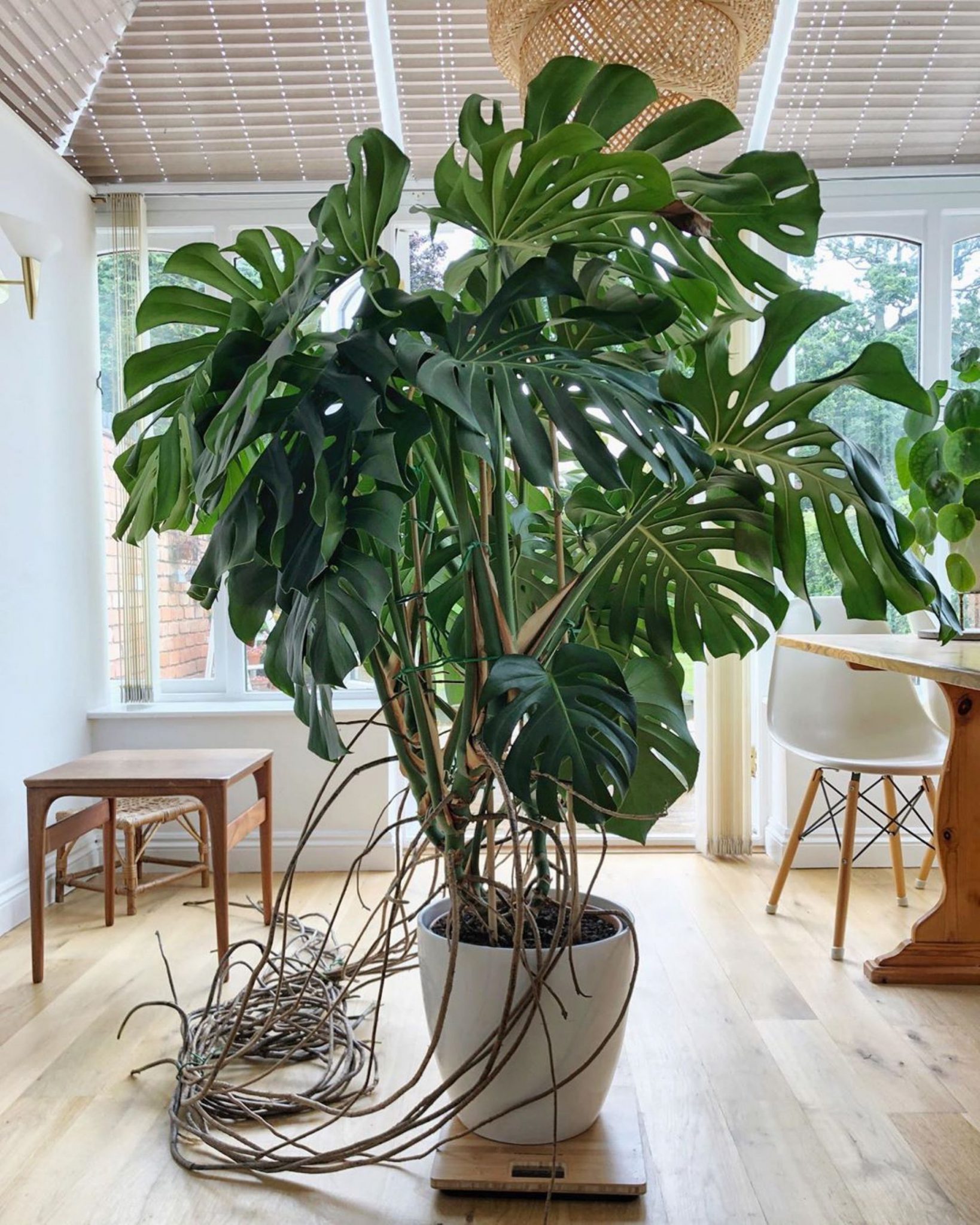
Source homesfornh.com
Introduction:
Monstera plants, also known as Swiss cheese plants, are a popular choice for indoor gardening enthusiasts. With their beautiful, hole-filled leaves and tropical aesthetic, these plants can add a touch of nature and elegance to any interior space. However, to ensure that your Monstera plant thrives and stays healthy, proper care is essential. In this article, we will provide you with all the information you need to know about Monstera indoor plant care.
Whether you are a beginner or an experienced plant owner, these tips and guidelines will help you create the perfect environment for your Monstera and keep it looking vibrant and lush.
Choosing the Right Environment:
Lighting:
Monstera plants thrive in bright, indirect light. Place your plant near a window where it can receive plenty of natural light throughout the day. However, avoid placing it in direct sunlight as it can scorch the leaves and cause them to turn yellow or brown.
If you have limited natural light in your space, you can also use artificial grow lights to provide your Monstera with the necessary light levels. LED grow lights are a popular choice as they are energy-efficient and produce a spectrum similar to natural sunlight.
Temperature and Humidity:
Monstera plants prefer warm and humid environments, ideally with temperatures ranging between 65°F to 85°F (18°C to 29°C). They can tolerate slightly lower temperatures but may experience slower growth.
To create the right humidity levels, you can mist your Monstera’s leaves regularly or use a humidifier. Placing a tray filled with water near the plant or grouping it with other plants can also help increase humidity levels.
Watering and Soil:
Proper watering is crucial for the health of your Monstera. They prefer moist but not overly wet soil. Allow the top inch (2.5 cm) of the soil to dry out before watering again. Overwatering can lead to root rot and other fungal diseases.
When watering, ensure that excess water drains out from the pot. Monstera plants do well in well-draining soil mixes that allow excess moisture to escape. A mixture of peat moss, perlite, and potting soil can be suitable for Monstera plants.
Promoting Growth and Maintenance:
Fertilizing:
To promote healthy growth, it is important to fertilize your Monstera plant regularly. During the growing season, which is typically spring and summer, you can use a balanced liquid fertilizer diluted to half strength every four weeks. This provides the necessary nutrients for the plant’s foliage and helps it develop vibrant colors.
During the dormant season, reduce the frequency to every six to eight weeks. Always follow the instructions on the fertilizer packaging for proper application.
Pruning:
Pruning is an essential part of Monstera plant care. Regular pruning helps control the plant’s size, encourages branching, and promotes a fuller, bushier appearance. Prune away any dead or yellowing leaves, as well as excessive growth that may impede the plant’s overall aesthetic.
When pruning, make clean cuts just above a node on the stem. This encourages new growth at that point. You can also propagate the cuttings to grow new Monstera plants.
Support and Training:
Monstera plants have aerial roots that help support their climbing nature in their natural habitat. Providing some form of support, such as a moss pole or trellis, allows your Monstera to grow upwards and mimic its natural growth pattern.
You can gently attach the aerial roots to the support structure using ties or clips. Encouraging vertical growth not only adds visual interest but also helps prevent the plant from becoming unruly or sprawling.
Table Breakdown of Monstera Care:
| Aspect | Instructions |
|---|---|
| Lighting | Provide bright, indirect light |
| Temperature and Humidity | Maintain temperatures of 65°F to 85°F (18°C to 29°C) and humidity levels around 60-70% |
| Watering | Allow the top inch (2.5 cm) of soil to dry out between waterings |
| Fertilizing | Use a balanced liquid fertilizer diluted to half strength every four weeks during the growing season |
| Pruning | Regularly prune away dead or yellowing leaves and excessive growth |
| Support and Training | Provide a support structure such as a moss pole or trellis to encourage vertical growth |
FAQ – Frequently Asked Questions:
Q: How often should I water my Monstera plant?
A: Water your Monstera plant whenever the top inch (2.5 cm) of soil feels dry to the touch. Overwatering can cause root rot, so it’s important to ensure proper drainage.
Q: Can I place my Monstera plant in direct sunlight?
A: While Monstera plants enjoy bright, indirect light, direct sunlight can be too harsh and cause the leaves to burn or turn yellow. It’s best to place them near a window with filtered light.
Q: How can I propagate my Monstera plant?
A: Propagating a Monstera plant can be done through stem cuttings. Take a healthy cutting with at least one node, place it in water or moist soil until roots develop, and then transplant it into a container.
Q: Do Monstera plants require high humidity?
A: Monstera plants prefer higher humidity levels, but they can tolerate average room humidity. Mist their leaves regularly or use a humidifier if the air in your space is dry.
Q: Is it normal for older leaves on my Monstera plant to turn yellow and fall off?
A: Yes, it is normal for the older leaves of Monstera plants to turn yellow and eventually fall off. As long as new growth appears healthy, this natural leaf shedding is nothing to worry about.
Conclusion:
Monstera indoor plant care involves providing the right lighting, temperature, humidity, and watering conditions. With proper care, your Monstera plant will thrive and become a stunning addition to your indoor plant collection. Remember to regularly prune and support your Monstera, and you’ll enjoy its lush foliage and unique aesthetic for years to come.